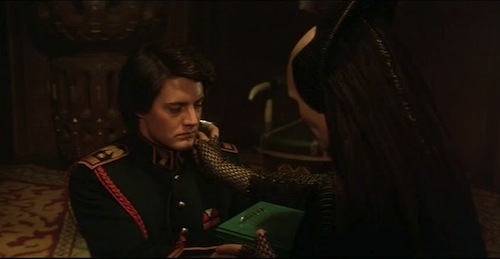A few nights ago, I dreamt of Arrakis. Arrakis—Dune—Desert Planet. Was this the awakening of my latent prescient abilities or just a hint that it was time for Science of Future Past to explore the science and technology in Frank Herbert’s Dune?
Dune was the first epic science fiction book that I read. The Foundation series takes place against what you could justifiably call an epic backdrop, but most of that backdrop remains stationary while one or two people explore interesting ideas in the foreground. Dune on the other hand has a truly epic feel to it, and part of that comes from the extensive world-building that Herbert did.
People, organizations, noble houses, and planets have extensive and intertwining histories that are evident in the behavior and dialogue of the novel’s characters. Part of that wonderful world-building includes an extensive amount of science and technology, some of which have real life analogues in today’s world.
Let us begin where Paul begins, with the device used by the Bene Gesserit to separate true humans from animals: the box.
The Box
…she lifted a green metal cube about fifteen centimeters on a side. She turned it and Paul saw that one side was open—black and oddly frightening. No light penetrated that open blackness.
“Put your right hand in the box,” she said.
…
“What’s in the box?”
“Pain.”
The mysterious box causes Paul to feel an intense burning pain, but causes him no actual harm. At the conclusion of the test, the Reverend Mother tells Paul that the box causes “Pain by nerve induction” and that “There’re those who’d give a pretty for the secret of this box.”
So let’s talk about some possibilities for the secret of the box.
From the book we know that nerve induction only affects what is in the box (the part of Paul’s arm outside the box didn’t experience pain), the pain can be varied in intensity, and the process can be stopped immediately, without lingering effect.
All of these clues together suggest that the box could operate via electromagnetic induction.
A device that worked via electromagnetic induction to cause pain would probably require physical proximity to the subject, as electromagnetic field strength falls off rapidly with distance. The outside of the box could easily be shielded to prevent the field from affecting parts of the body not in the box, and the effects of the field would disappear immediately when shut off.
Electromagnetic nerve induction is a phenomenon that has been studied extensively, especially as a non-invasive means of pain-management. Unfortunately, despite everything we know about nerves and the biochemistry of pain, how magnetic fields affect pain thresholds isn’t yet well understood.
Despite all of the research involving the effects of electromagnetic fields on biochemical reactions, I could not find any work being done on causing pain via electromagnetic fields.
Several studies have shown that electromagnetic fields can affect various biochemical processes, including cell growth, blood flow, inflammation, wound healing, and even tinnitus. The type of field and duration of exposure make a difference as well. It has also been shown that blocking the Earth’s natural magnetic field using electromagnetic shielding can cause fluctuations in the ability of mice to feel pain.
An interesting fact that is relevant to the Bene Gesserit’s use of the box is that EMFs seem to affect males and females differently. This is handy if you’re using EMFs to search for the Kwisatz Haderach.
Another study of interest showed that the biochemical effects caused by an electromagnetic field depend upon the amount of light in the room. Could this be why the Reverend Mother waited until morning to conduct the test with the box, and why she carried it out in the Lady Jessica’s morning room where there were plenty of windows?
For a great review of the effects of electromagnetic fields on your biochemistry, I recommend this 2007 paper by Del Sepia et al. If after reading that you’re still brave enough to stick your hand in the box, then you may just be the Kwisatz Haderach.
Dr. Lee Falin is a Bioinformatician, the host of the Everyday Einstein’s Quick and Dirty Tips podcast, and the author of the “Science Fictioned” series, in which he takes ideas from scientific research articles and turns them into science fiction and fantasy short stories for middle grade and young adult readers.










